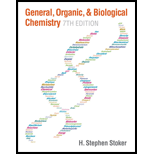
Concept explainers
(a)
Interpretation: The total number of chiral centres present in the compounds of the given pair has to be stated.
Concept introduction: A center to which four different groups are attached in a tetrahedral geometry and show handedness is called chiral center. The molecule that forms a non-superimposable mirror image is called a chiral molecule.
(b)
Interpretation: The total number of chiral centres present in the compounds of the given pair has to be stated.
Concept introduction: A center to which four different groups are attached in a tetrahedral geometry and show handedness is called chiral center. The molecule that forms a non-superimposable mirror image is called a chiral molecule.
(c)
Interpretation: The total number of chiral centres present in the compounds of the given pair has to be stated.
Concept introduction: A center to which four different groups are attached in a tetrahedral geometry and show handedness is called chiral center. The molecule that forms a non-superimposable mirror image is called a chiral molecule.
(d)
Interpretation: The total number of chiral centres present in the compounds of the given pair has to be stated.
Concept introduction: A center to which four different groups are attached in a tetrahedral geometry and show handedness is called chiral center. The molecule that forms a non-superimposable mirror image is called a chiral molecule.
Want to see the full answer?
Check out a sample textbook solution
Chapter 18 Solutions
GENERAL,ORGANIC,+BIO.CHEM.-MINDTAP
- Does trehalose (Problem 20.68) have an acetal grouping? A hemiacetal grouping? Do you expect trehalose to be a reducing or nonreducing sugar? Classify the linkage between the two monosaccharides.arrow_forwardWhy is it not possible to find a five-fold symmetry operation in naturally-occurring crystals?arrow_forwardWhat is the “octet rule” and its biologically important exception?arrow_forward
- Following are Fischer projections for a group of five-carbon sugars, all of which are aldopentoses. Identify the pairs that are enantiomers and the pairs that are epimers. (The sugars shown here are not all of the possible five-carbon sugars.) 1 СНО 2 СНО СНО Н-С—ОН Н-С—ОН Н—С—ОН Н-С—ОН НО —С—Н Н-С—ОН Н- С—ОН НО—С— Н НО—С—Н CH̟OH CH̟OH ČH̟OH в iоchemistry |61 STATE ATION Republic of the Philippines Romblon State University Romblan, Philippines 4 СНО 5 СНО 6 СНО НО—С—Н Н-С—ОН НО -С—Н Н—С—ОН НО -С—Н НО -С—Н H-C–OH Н-С—ОН НО—С—Н CH,OH ČH,OH CH,OHarrow_forwardThe explosive trinitrotoluene (TNT) is made by carrying out three successive nitration reactions on toluene. If these nitrations only occur in the ortho and para positions relative to the methyl group, what is the structure of TNT?arrow_forwardWhat functional groups are present in the peaks?arrow_forward
- Does gentiobiose (Problem 20.66) have an acetal grouping? A hemiacetal grouping? Do you expect gentiobiose to be a reducing or nonreducing sugar? How would you classify the linkage (x or β and carbon numbers) between the two monosaccharides?arrow_forwardFollowing are Fischer projection for a group of five carbon sugars,all of which are aldopentoses. Identify the pairs that are enantiomers and the pairs that are epimers.(The sugar shown herebare not all of the possible five carbon sugars.)arrow_forwardFollowing are Fischer projections for a groupof five-carbon sugars, all of which are aldopentoses. Identify thepairs that are enantiomers and the pairs that are epimers. (Thesugars shown here are not all of the possible five-carbon sugars.)arrow_forward
- Draw the four stereoisomers of threonine as Fischer projections.arrow_forwardHow many chiral carbon atoms are there in each of the two parts of the repeating unit in heparin (p. 684)? What is the total number of chiral carbon atoms in the repeating unit?arrow_forwardWhat structural relationship is indicated by the term D-sugar? Why are (+) glucose and (-) fructose both classified as D-sugars?arrow_forward
